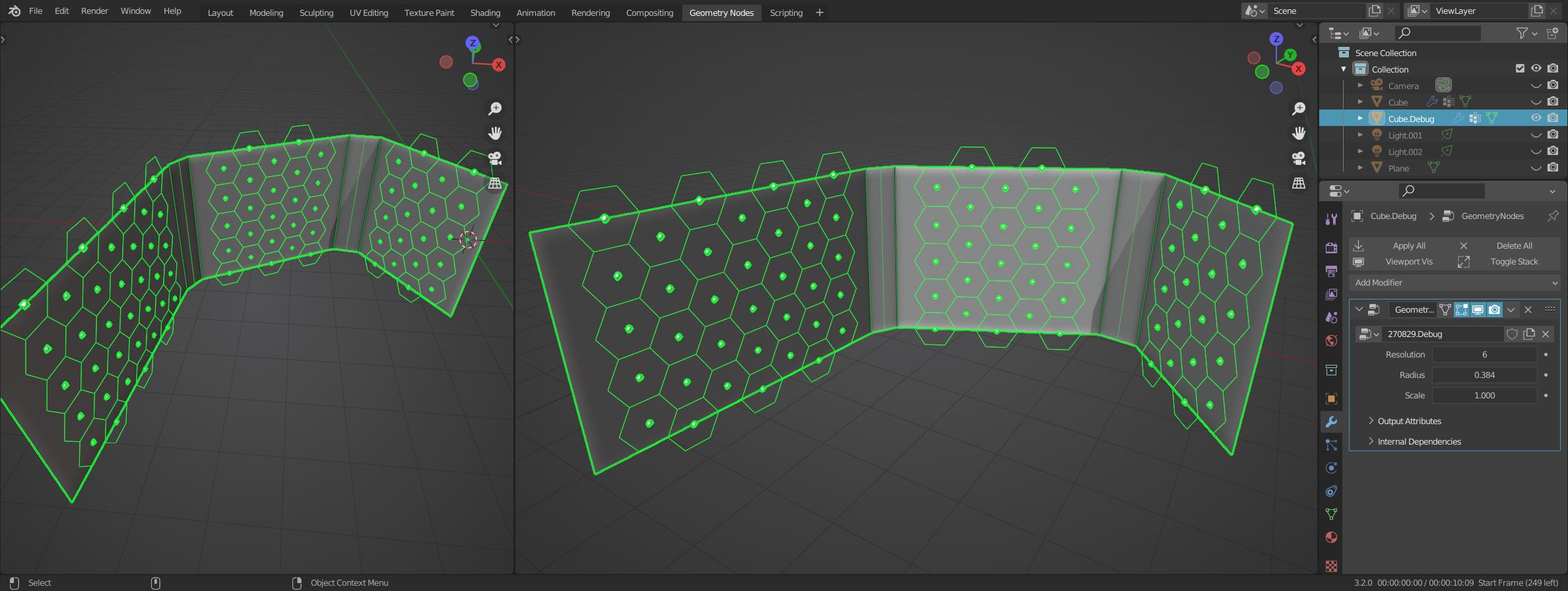I am working on a fan design of the TARDIS Console room from Doctor Who, and intend to use geometry nodes to generate the roundels that can be seen on the walls. My plan is to do this by subdividing the walls and instancing cylinders to use with a boolean node, then instance modeled roundels over the holes this leaves. However most in TARDIS console rooms the roundels are arranged using a hexagonal pattern (I.E rows using alternating heights) as opposed to a grid pattern. I have tried using the triangulate and dual mesh nodes however when run through a mesh to curve node it still ends up a grid pattern.
There are tutorials for Geometry Nodes Hexagonal grids, but as best I can tell, they use mesh primitives generated within the node tree, namely the mesh line or mesh grid. While a passable alternate option, ideally I want the node network to employ the existing geometry I model for the structure of the room instead of needing to position and resize the panel for each individual wall, which the solutions I have found would demand.
Does anyone have a solution to distribute points in a hexagonal pattern using the pre-existing geometry?
Edit: The example suggested is unfortunately not what I am looking for as they involve geometry entirely generate within the node tree, as I said before my intention is to use existing geometry, that is to say the geometry of the model that I would be employing to build the main structure, something entirely generated within the node tree would then need to be adjusted and positioned to correctly interact with the node tree, which would be additional hassle if it were possible to avoid it: the current idea would be to select the walls as part of a vertex group and expose the selection of a separate geometry to get the faces which would serve the basis of my array.
It was also suggested that I add a visual example of what I'm trying to achieve, so I quickly googled TARDIS Wall to get an example:

As I wrote above, the idea would be to place points in this pattern, then instance cylinders to cut into the wall using a boolean math node, then instance a more complex design in the holes I cut.
Further Edit: I have begun the mesh now, here is a screenshot of it. The selected faces are the ones I want to put Roundels on










Mesh Boolean. Therefore this is a duplicate. Or is your question more about aligning an existing mesh to another (e.g. along the normal and resized), rather than creating a hexagonal structure? $\endgroup$